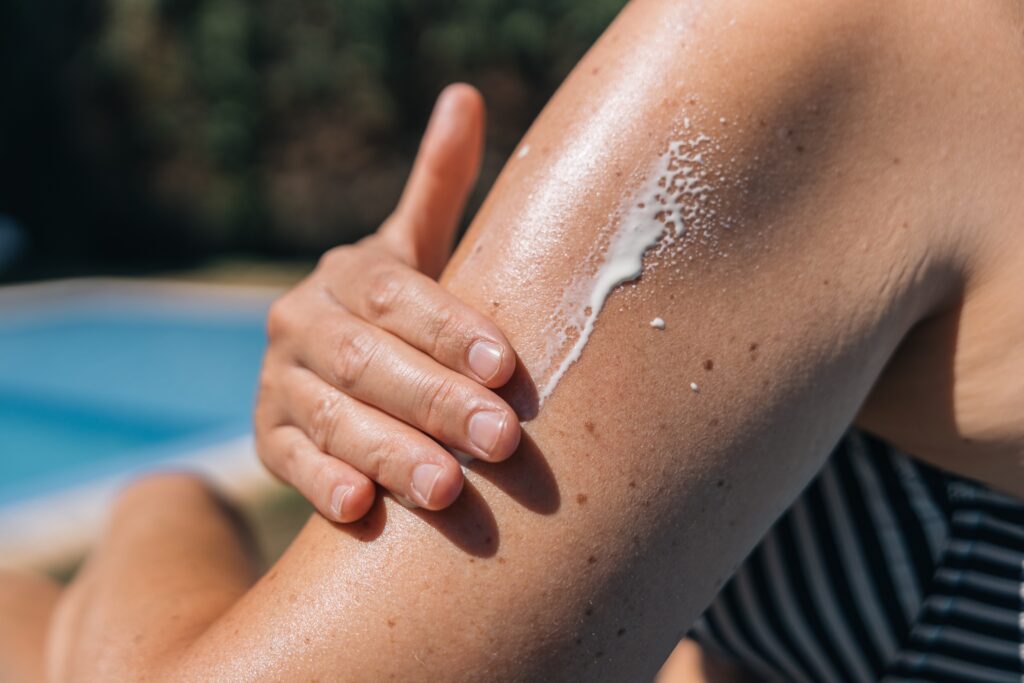When you think of summer, you probably picture sunny days at the beach or enjoying a picnic. But while the sun can be an excellent source of joy and energy, it can also be harmful if we don’t take the proper precautions. Protecting yourself against damaging UV rays is crucial for everyone, regardless of age or skin type. This guide will provide essential tips to keep you safe under the sun.
Why Sun Protection Matters
Understanding UV Rays
Ultraviolet (UV) rays from the sun are the main culprit behind skin damage. There are two types to worry about: UVA and UVB. UVA rays penetrate deep into the skin, causing aging and long-term skin damage. UVB rays, on the other hand, are responsible for sunburns. Both types can lead to skin cancer over time.
The Risks of Overexposure
Prolonged sun exposure without protection can result in severe consequences, including sunburn, premature aging, and an increased risk of skin cancer. Even on cloudy days, up to 80% of UV rays can penetrate the clouds, making it essential to stay protected year-round.
Who Needs Sun Protection?
The short answer is everyone. While people with fair skin are more prone to sunburn, those with darker skin tones are not immune to skin damage. Regardless of your skin type, age, or gender, incorporating sun protection into your daily routine is essential.
Choosing the Right Sunscreen
SPF and What It Means
SPF stands for Sun Protection Factor. It measures how well a sunscreen can protect you from UVB rays. A higher SPF means more protection, but no sunscreen can block 100% of UV rays. Experts recommend using sunscreen with at least SPF 30 for daily use.
Broad-Spectrum Protection
Look for sunscreens labeled “broad-spectrum.” This means they protect against both UVA and UVB rays. Broad-spectrum sunscreens offer comprehensive coverage, ensuring your skin stays safe from all types of UV radiation.
How to Apply Sunscreen
For maximum effectiveness, apply sunscreen 15-30 minutes before going outside. Use about an ounce (enough to fill a shot glass) to cover your entire body. Reapply every two hours or more often if you’re swimming or sweating.
Wearing Protective Clothing
Hats and Sunglasses
A wide-brimmed hat can shield your face, ears, and neck from direct sunlight. Sunglasses with UV protection are equally important, as they protect your eyes from harmful rays that can lead to cataracts and other eye issues.
Long Sleeves and Pants
Wearing long sleeves and pants made from tightly woven fabrics can offer excellent sun protection. Some clothing items come with a UPF (Ultraviolet Protection Factor) rating, which indicates how effectively they block UV rays.
Special Sun-Protective Clothing
Sun-protective clothing is specifically designed to block UV rays. These items are great for extended outdoor activities and offer a breathable, comfortable alternative to regular clothing.
Seeking Shade
The Importance of Shade
Staying in the shade is one of the easiest ways to prioritize sun safety. Shade can significantly reduce exposure to harmful UV rays, whether under an umbrella, tree, or canopy.
Timing Your Outdoor Activities
The sun’s rays are strongest between 10 AM and 4 PM. Try to plan your outdoor activities before or after these peak hours to minimize your risk of sunburn and other sun-related damage.
Portable Shade Options
Investing in portable shade options like beach umbrellas, pop-up tents, and portable canopies can provide on-the-go protection. These items are handy for picnics, beach trips, and other outdoor events.
Hydrating Properly
Why Hydration is Key
Staying hydrated is crucial when spending time in the sun. Dehydration can exacerbate the effects of sun exposure and make you feel dizzy, tired, and irritable.
Drinking Water
Drink plenty of water throughout the day, especially if you’re active or spend extended periods outside. Aim for at least 8 cups of water daily, more if you’re sweating heavily.
Hydrating Foods
Incorporate hydrating foods like watermelon, cucumbers, and oranges into your diet. These foods are high in water content and can help keep you hydrated while providing essential nutrients.
Sun Protection for Outdoor Sports
Gear Up
If you’re into outdoor sports, invest in sun-protective gear. Look for clothing with UPF ratings and choose hats and helmets designed to offer maximum protection.
Reapply Sunscreen
Sports can make you sweat, which can wash away sunscreen. Make sure to reapply every two hours or more frequently if you’re sweating heavily or in the water.
Stay Hydrated
Outdoor sports can increase your risk of dehydration. Drink plenty of fluids before, during, and after your activity to stay hydrated and perform at your best.
Common Myths About Sun Protection
Myth 1: You Don’t Need Sunscreen on Cloudy Days
Clouds can block some sunlight, but up to 80% of UV rays can still penetrate them. Make it a habit to wear sunscreen every day, regardless of the weather.
Myth 2: Darker Skin Doesn’t Need Sun Protection
While darker skin has more melanin, which offers some protection against UV rays, it’s not immune to sun damage. Everyone, regardless of skin tone, should use sun protection.
Myth 3: Sunscreen is All You Need
While sunscreen is vital for sun protection, it shouldn’t be the only line of defense. For optimal protection, combine it with protective clothing, hats, sunglasses, and shade.
Conclusion
Protecting yourself against the sun is essential for maintaining healthy skin and preventing long-term damage. By incorporating sun protection into your daily routine, you can enjoy the sun’s benefits without the risks. Remember, the best defense is a good offense—layer your sun protection strategies for optimal sun safety.
For tips like these, please visit our blog.

